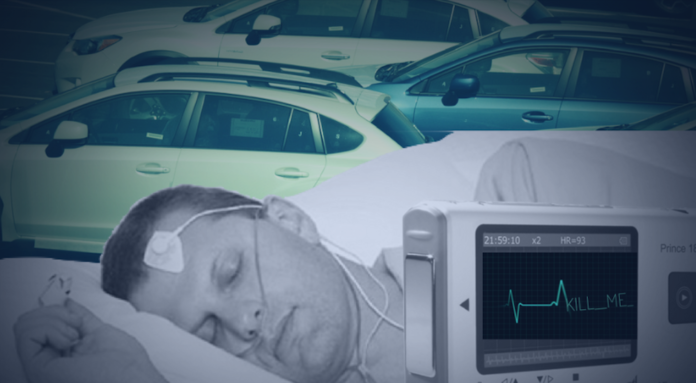The phrase “sleep studies” will elicit drastically different responses depending on the audience. Some immediately associate the term with the horrific and unnatural experimentation orchestrated by Nazi scientists in the 1930’s and 1940’s. (Note: if you’re not familiar with the aforementioned experiments, we recommend that you don’t explore that particular rabbit hole, unless you ready for things you can never “un-know”).
But by today’s standards, sleep studies take a far more beneficial route, diagnosing and addressing the wide-range of sleep disorders that affect us every day.
Take the growing prevalence of Sleep Apnea diagnoses, for example. This particular disorder only came onto our cultural radar in the late 1990’s. Those afflicted with sleep apnea endure harmful sleep habits, most noticeably their tendency to stop breathing as a result of either relaxed throat muscles or misdirection of brain signals. If left untreated, the disorder can lead to both longterm heart and brain damage. The only means of treating it, are through the use of C-PAP machines that help maintain breathing through the night. However, the only means of diagnosing the severity of the condition is through a sleep study.
But sleep apnea is only one of many sleep-related disorders. Insomnia introduces difficulties in both falling and staying asleep. Narcolepsy creates an overwhelming sense of drowsiness during daytime hours. Other conditions, such as Restless Legs Syndrome, Sleepwalking and Night Terrors can have a drastic effect on a patient’s well-being, leading to dangerous sleep deprivation.
But progress comes in odd places sometimes, and the most recent advances in the treatment of sleep disorders comes from the automotive industry. In fact, we are only learning now that they have been actively developing vehicles to help you sleep you better, for the better part of a decade. Those vehicles? Crossover SUVs.
Car and Driver Staff Correspondent, Mel Ohtonen, explains,”The introduction and continual evolution of the crossover SUV has made huge strides in terms of offering a more economical, and ecologically responsible alternative for families, without sacrificing practicality, versatility or utility. But…considering all of that, why aren’t we more excited to talk about crossovers?”
Mr. Ohtonen contends that (as consumers, motorists, and automotive enthusiasts) we “get excited about sports cars and performance vehicles, muscle cars, trucks of all sizes, off-roading Jeeps, classic cars of all makes, models and years. And yet, when have you ever heard anyone excitedly compare the 2018 Buick Encore vs. 2018 Ford Escape?”
“Considering how much today’s crossovers manage to achieve, and how many features they successfully incorporate, we should be thrilled to talk about them non-stop. So, why is it that we find them so damn boring?”
As it turns out, crossover SUVs are ‘Ennuyeux par la Conception’ or ‘Boring-by-Design.’ Building from an obscure French design philosophy, automakers have been deliberately creating crossovers that feel both uninspired and inherently redundant.
“That’s why most crossovers are the design equivalent of a wooden door wedge,” elaborates Ohtonen. “The French call it ‘Tueur D’erection,’ which loosely translates to ‘The Boner Killer.’ It’s basically the most bland design that anyone can imagine. It’s not fun. It’s not sexy. It’s just sort of…there. And studies have shown that driving such a vehicle on a daily basis makes it possible for small fragments of your soul to die on a daily basis. Whether your relationship with a crossover runs the length of a 36-month lease or a 72-month financing period, you can bet that you’ll be more inclined to sleep entire days away than you’d have been, if behind the wheel of any other vehicle. Speaking frankly, most crossover SUVs should come with a Drowsiness Warning…or at least a “Break in Case of Emergency” container of cocaine.”












